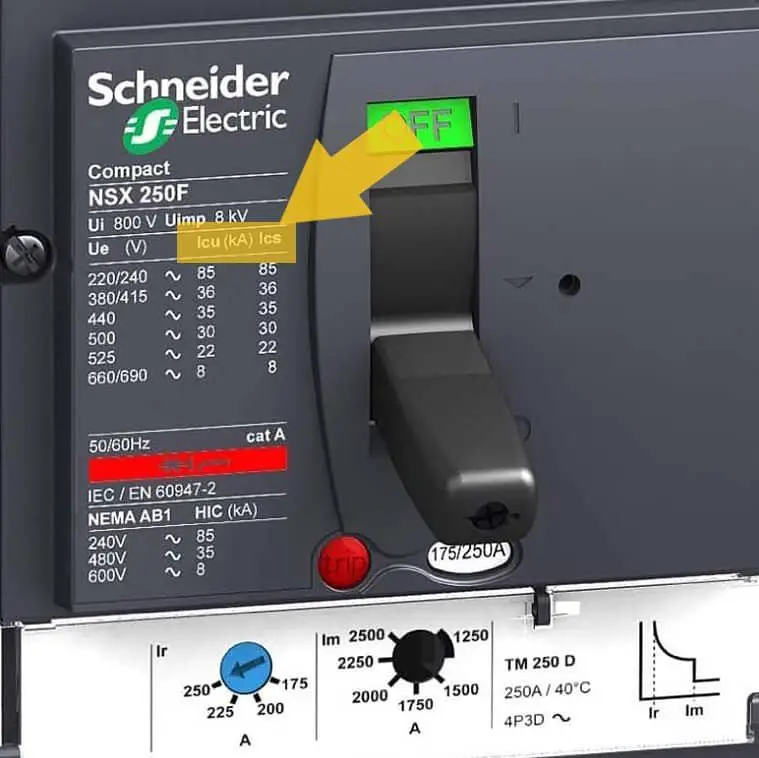Circuit breakers are devices that can protect circuits or loads during overloads and short circuit. The reliability of the circuit breakers during short circuits is determined by Ultimate breaking capacity (Icu) and Service breaking capacity (Ics) ratings. These ratings are mentioned in IEC/EN 60947-2.
Definition of Ultimate breaking capacity (Icu)
The term Ultimate breaking capacity (Icu) define the maximum short circuit current that a circuit breaker can interrupt without damaging itself. It can be considered as the upper limit for the short circuit current that it can safely handle. It is denoted as Icu and rated in kilo-Amperes.
The above pictures shows the Icu rating of a moulded case circuit breaker for various operating voltages. For example: at 440V, the circuit breaker shown in the picture can break a maximum short circuit current of 35kA.
Service breaking capacity (Ics)
Service breaking capacity is the maximum short circuit current the circuit breaker can safely break at least three times and still resume its normal operation. This current can be equal to less than or equal to the ultimate short circuit breaking capacity of the circuit breaker. It is denoted as Ics and rated in kilo-Amperes.
In the above picture, the service breaking capacity can be noted as 35kA which is same as the Ultimate breaking capacity. This means that the circuit breaker can break at least three short circuit of 35kA and still resume its normal operation.
Ultimate breaking capacity is the measure of quality of a circuit breaker and Service breaking capacity is the measure of reliability and robustness.
For more detailed explanations refer: https://new.abb.com/news/detail/11829/defining-short-circuit-values-for-circuit-breakers

Icu is the SCCR of the breaker. But this explanation doesn’t tell us how we would apply Ics, unless purely for writing specifications if we want a more “robust” product.